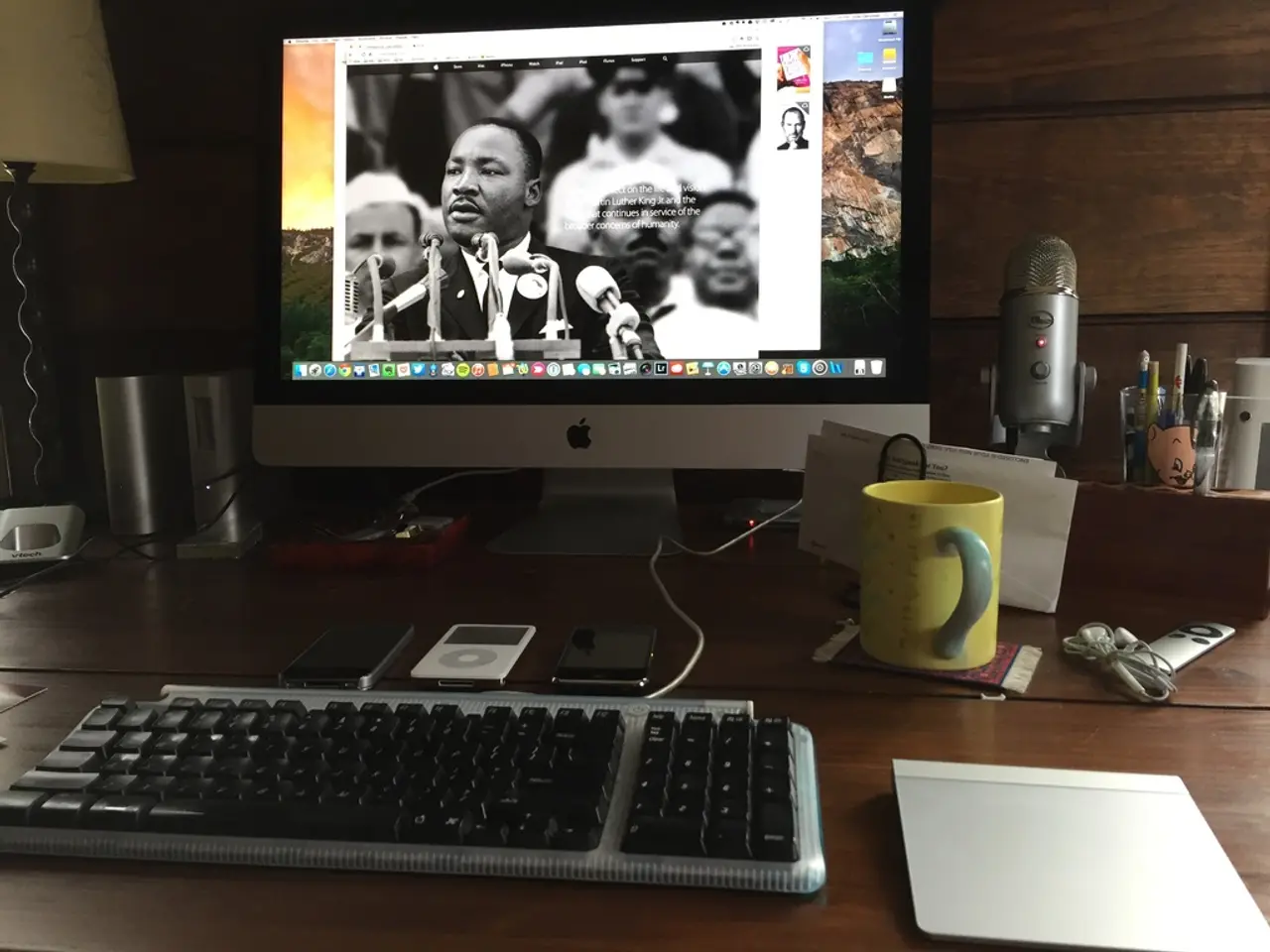Installing video doorbells: essential tips and requirements
A video doorbell can be a valuable addition to your home security system, offering the ability to see and record visitors at your front door. When it comes to installation, you have two main options: DIY or hiring a professional electrician. Here's a guide to help you decide.
The Advantages of DIY Installation
If you're handy with tools and have some electrical knowledge, a DIY installation can save you money. A battery-powered video doorbell, such as the Yale Smart Video Doorbell, can be installed easily with a standard DIY kit. These devices don't require any wiring or electrical work, making them a straightforward choice for confident DIYers.
When to Hire a Professional Electrician
For wired video doorbells, the installation process can be more complex. Working with your home’s electrical wiring and possibly modifying or adding wiring inside walls can present electrical shock and fire hazards. If you don't have solid electrical knowledge and experience, it's generally safer and advisable to hire a licensed electrician.
Local codes may also require permits and inspections for electrical modifications, including installing wired devices. Professionals know when permits are necessary and can handle these legal requirements properly. DIY installation risks non-compliance and safety hazards.
Installation often involves mounting the device at a low position about four feet from the door, sometimes on walls or posts requiring drilling. Ladder safety and ensuring the power is completely turned off at the breaker box are essential precautions. If you are uncomfortable with these tasks, a professional can reduce the risk.
Cost considerations are also important. Professional installation costs typically range from £150 to £400 or $180 to $700 depending on complexity and location, with labor billed at around £40-£75 or $40-$140 per hour. Basic DIY can save money, but only if you have confidence in doing minor wiring tasks safely and correctly.
Factors to Consider Before Making Your Decision
To determine whether you should DIY or hire an electrician for installing a wired video doorbell, consider the following factors:
- Complexity and Electrical Experience: Installing a wired video doorbell involves working with your home’s electrical wiring and possibly modifying or adding wiring inside walls.
- Legal and Safety Requirements: Many local codes require permits and inspections for electrical modifications.
- Tools, Equipment, and Physical Safety: Installation often involves mounting the device at a low position about four feet from the door, sometimes on walls or posts requiring drilling.
- Cost Considerations: Professional installation costs typically range from £150 to £400 or $180 to $700 depending on complexity and location.
- Technical Setup and Configuration: Connecting the doorbell to Wi-Fi, configuring apps, and integrating with security systems may also require some technical skill.
Making Your Decision
- Hire an electrician if:
- You lack electrical wiring experience or knowledge of local codes and permits.
- Installation involves significant wiring modifications or drilling near existing electrical systems.
- You want guaranteed safe, compliant, and professionally inspected work with warranty.
- You are unsure about safely turning off power or ladder use.
- DIY if:
- Your home wiring is straightforward and existing doorbell wiring can be reused with minimal modifications.
- You have electrical skills, tools, and knowledge of safety and code requirements.
- You are comfortable with mounting and network setup.
Given that wired video doorbell installation involves electrical safety and code compliance, many experts recommend hiring a licensed electrician unless you are very confident in your electrical skills and local regulations. This protects your warranty, especially if you're spending a lot of money on a video doorbell package that includes other security features such as cameras and sensors.
Remember, installing outside lights with motion sensors can be a good deterrent and boost home security. Video doorbells can help you see and record people when they approach the front door, providing peace of mind that family members have arrived home and helping avoid missed deliveries.
Sources: [1] https://www.homedepot.com/c/how-to-install-a-video-doorbell/9ba0062d851b11e59a6f6a1f161484e8 [2] https://www.bhphotovideo.com/explora/how-to/video/how-to-install-a-video-doorbell [3] https://www.electrical-installation-guide.co.uk/wiring-doorbells-and-door-entry-systems/ [4] https://www.diynot.com/forums/thread/4480432.html [5] https://www.electrical-installation-guide.co.uk/electrical-safety-rules/
- For those who are skilled with tools and have some electrical knowledge, a DIY installation of a battery-powered video doorbell like the Yale Smart Video Doorbell can be a cost-effective option, as it can be installed easily with a standard DIY kit.
- If you're considering a wired video doorbell for your home-and-garden home improvement project, it's generally safer and advisable to hire a licensed electrician due to the complex electrical work involved and potential legal requirements.
- DIY installation of wired video doorbells can save money, but only if you have confidence in safely and correctly doing minor wiring tasks, have the necessary tools, and understand the local safety codes and permit requirements.
- When deciding whether to DIY or hire an electrician for a wired video doorbell installation, consider factors like the complexity of the electrical work, legal requirements, tools and equipment needed, cost considerations, and your technical setup and configuration skills.




